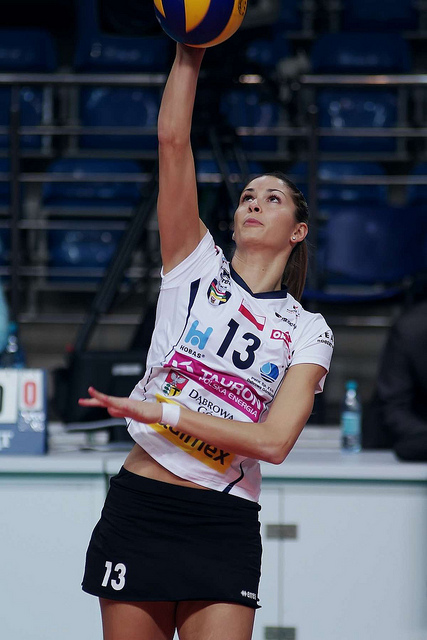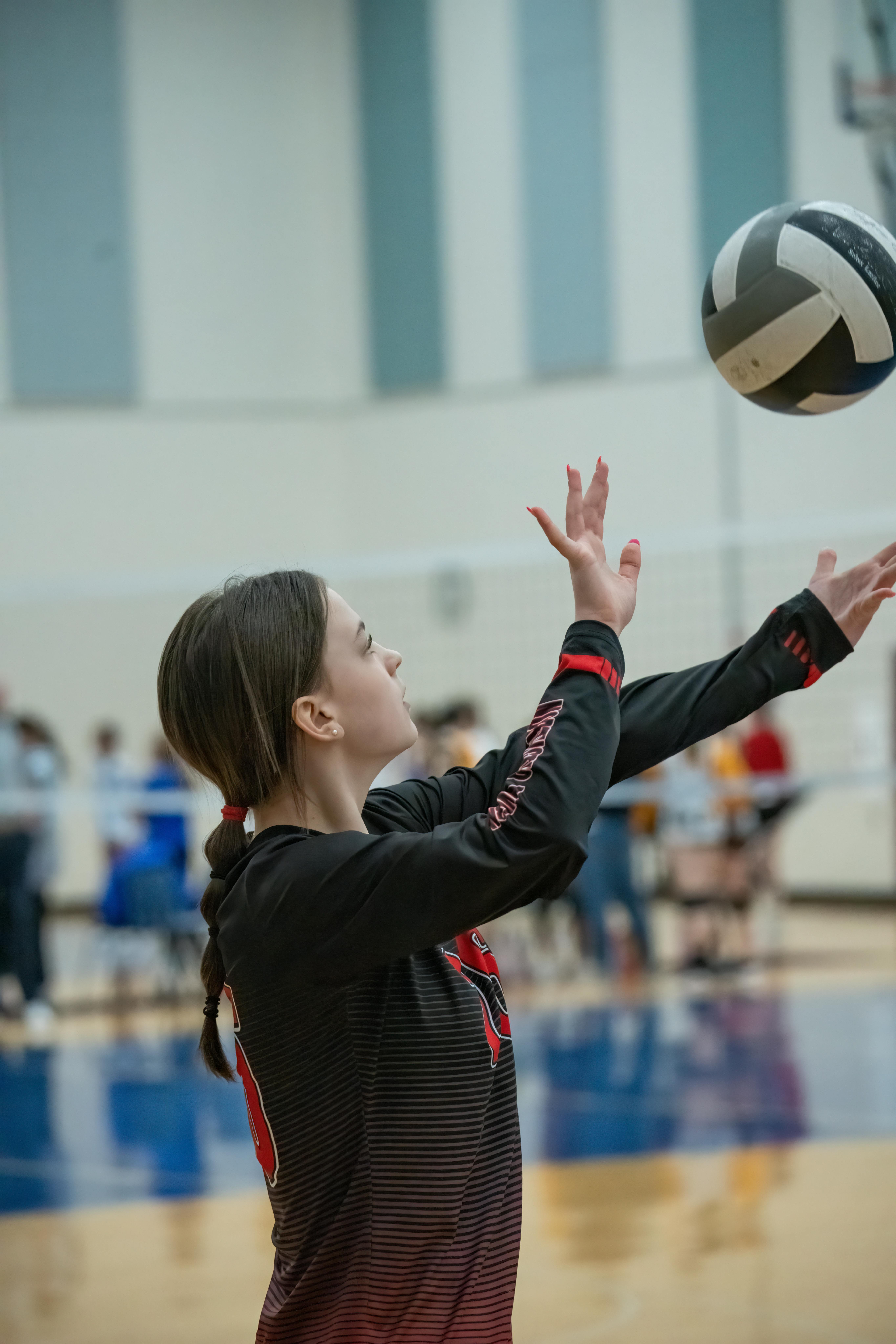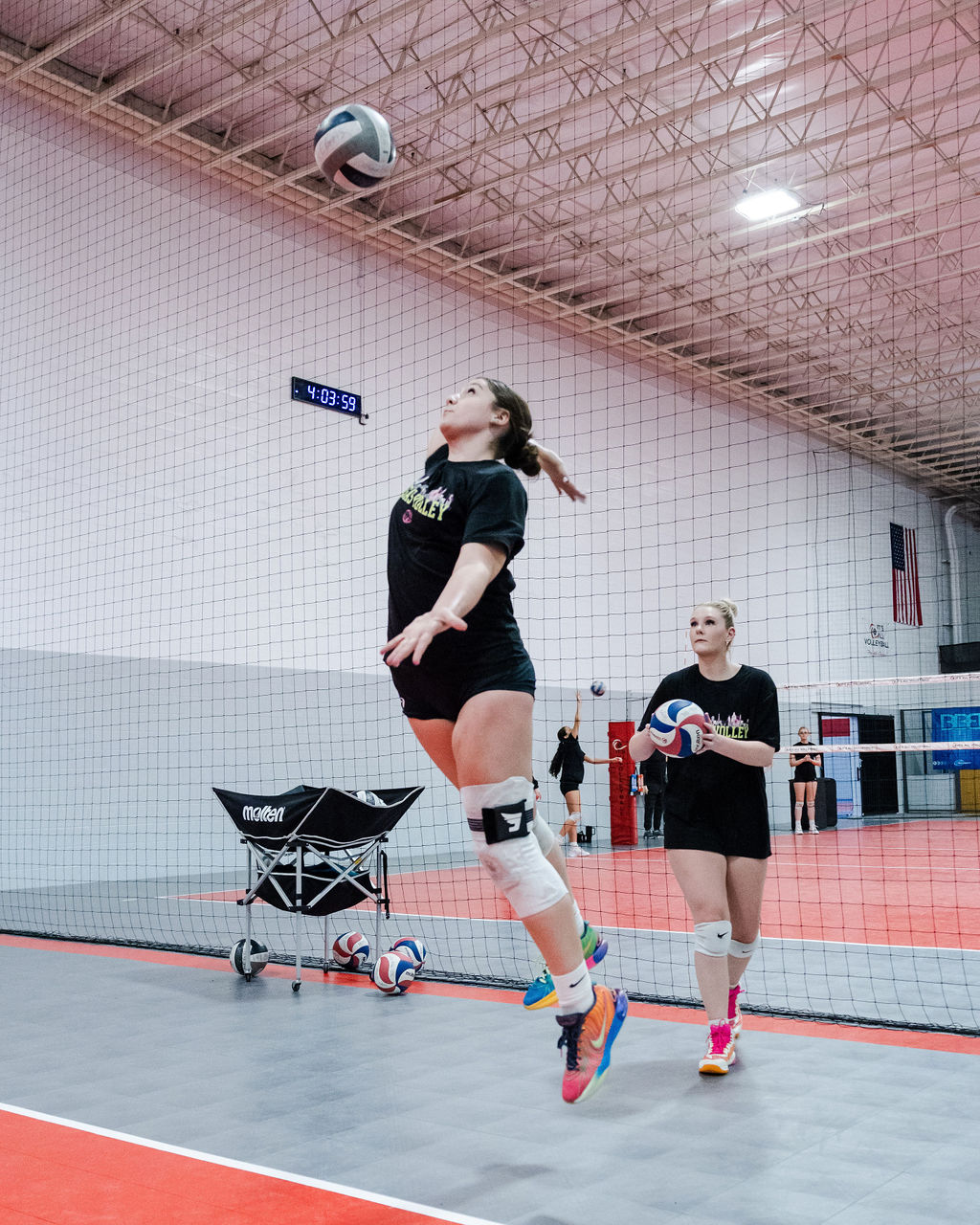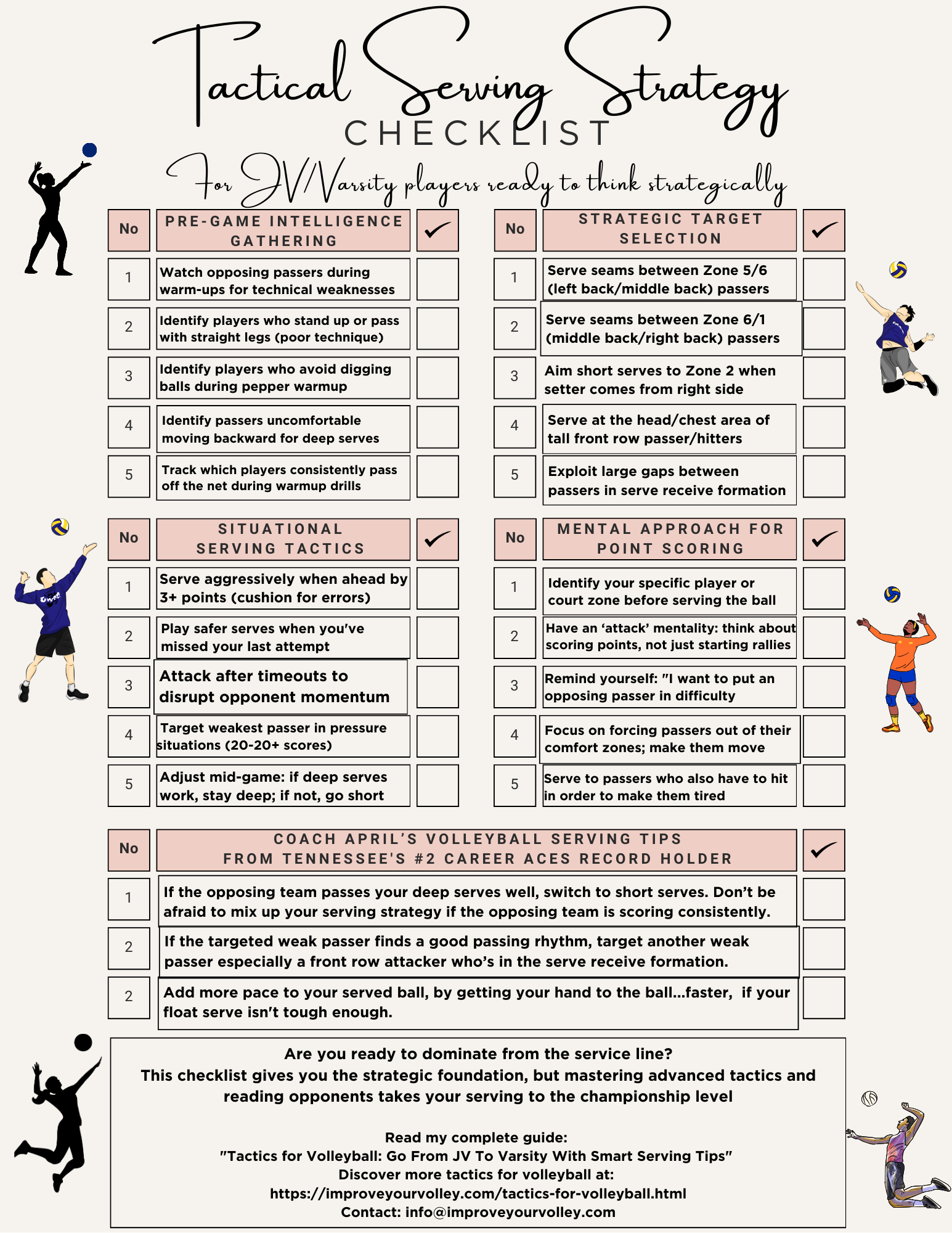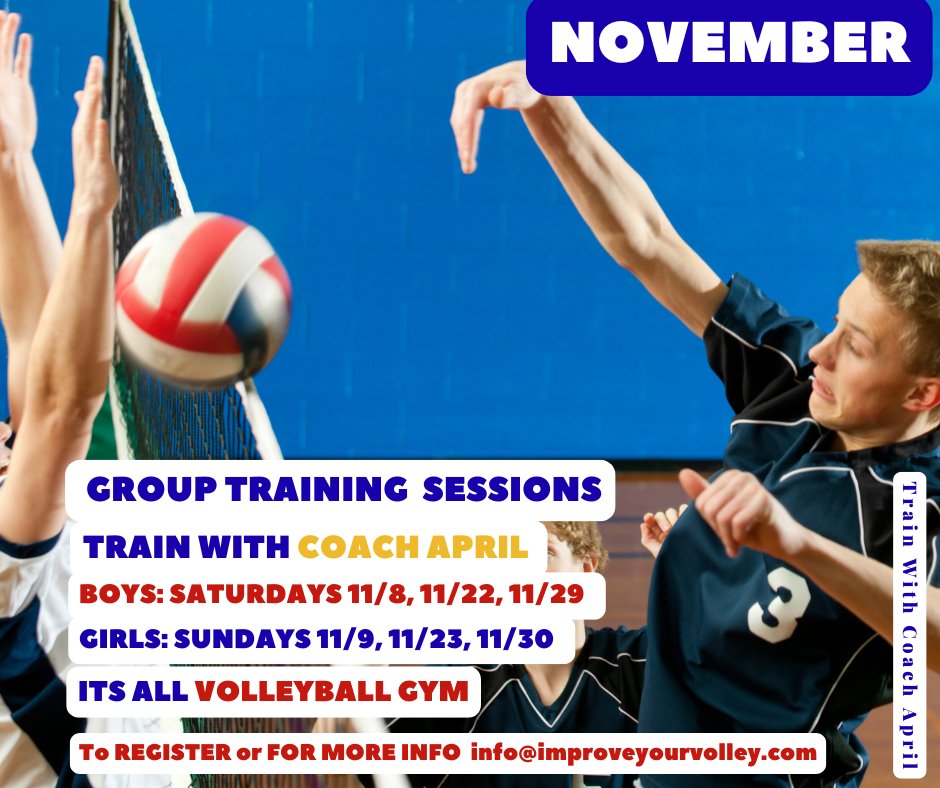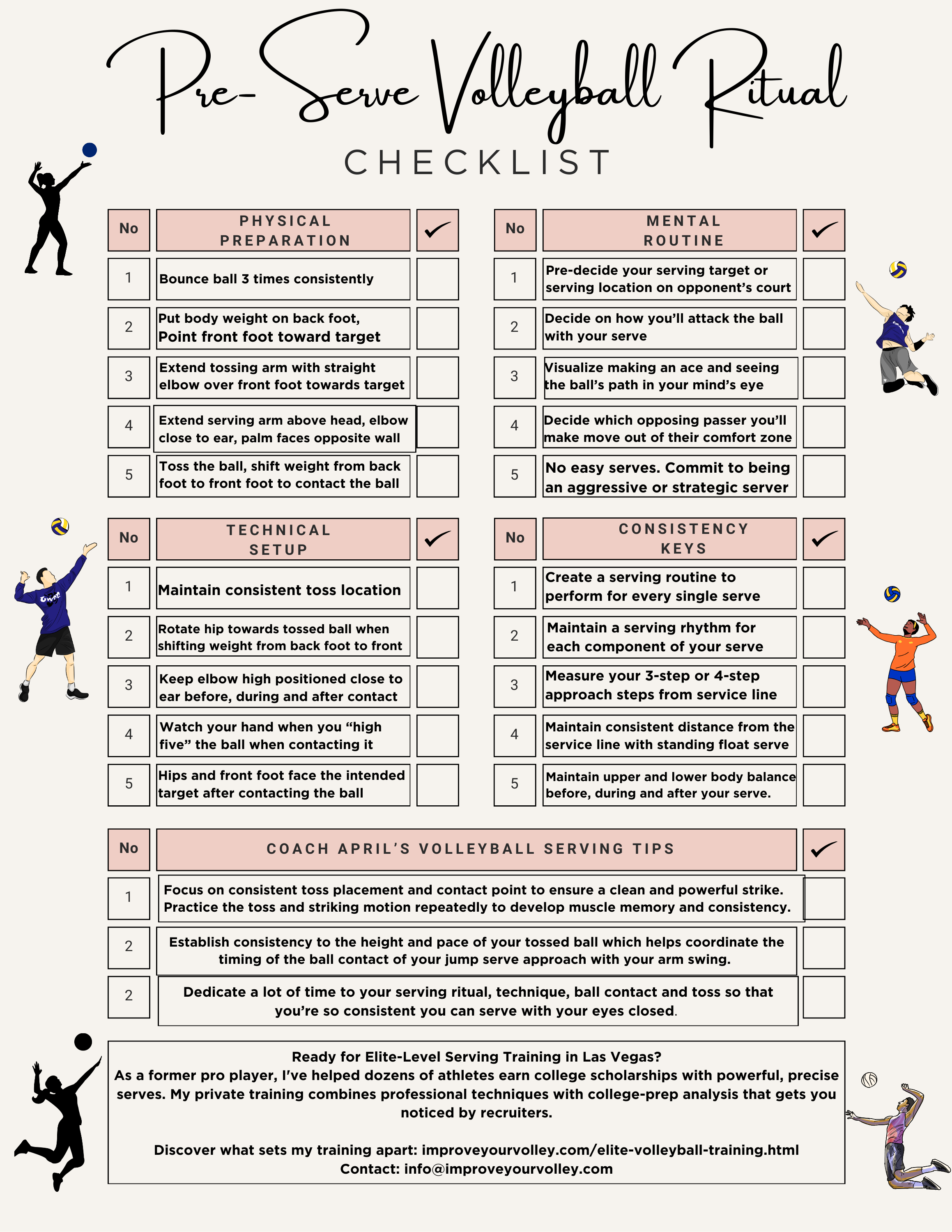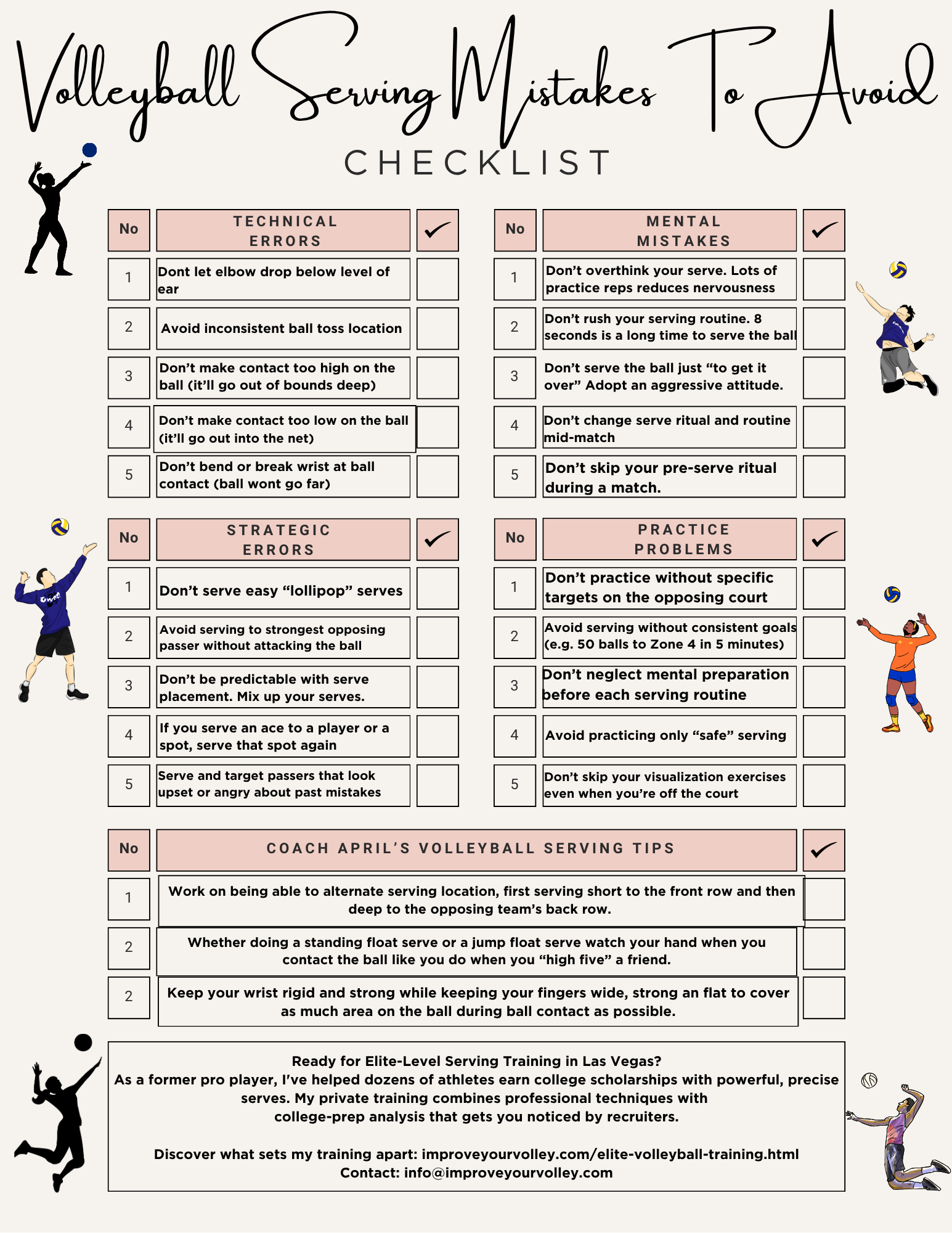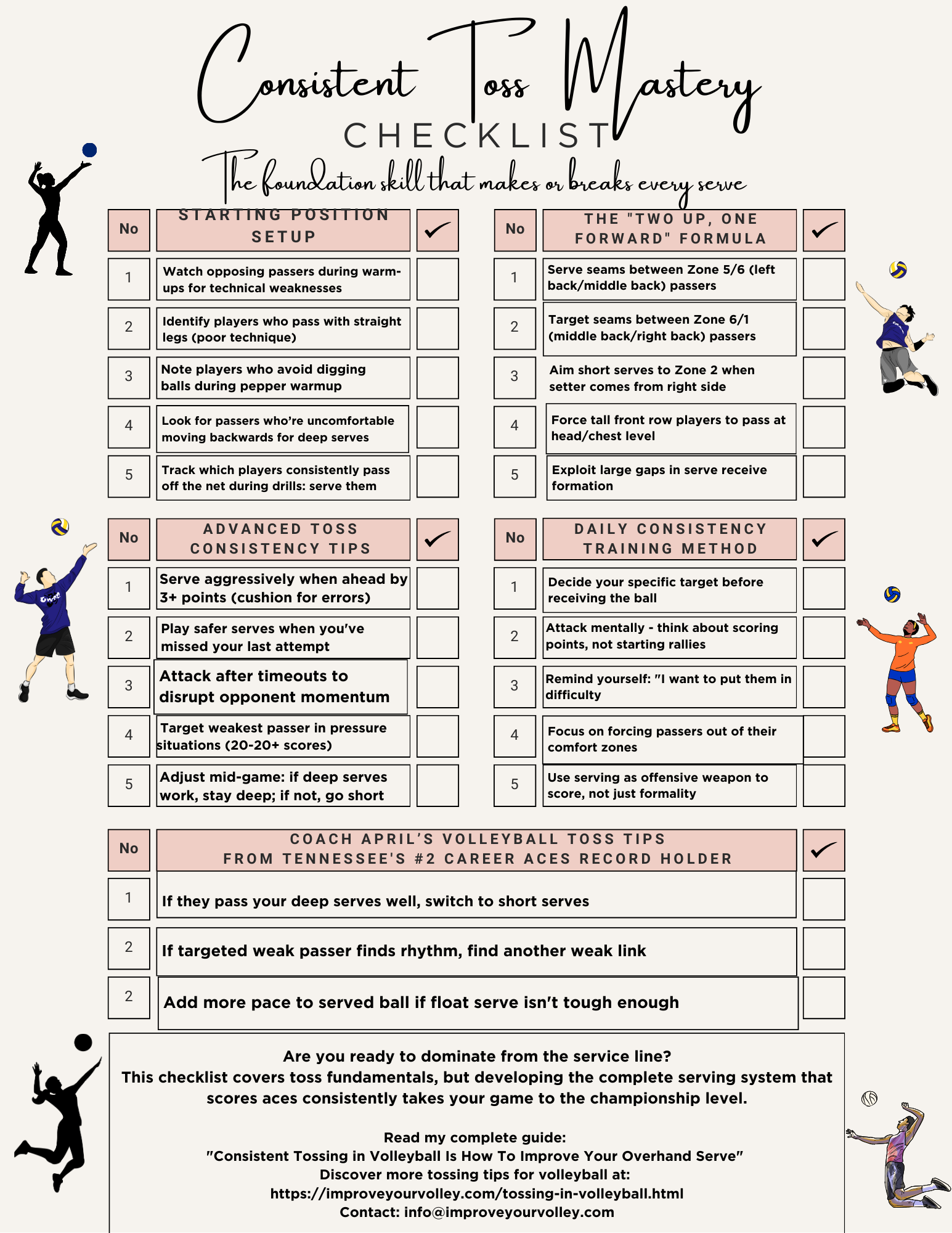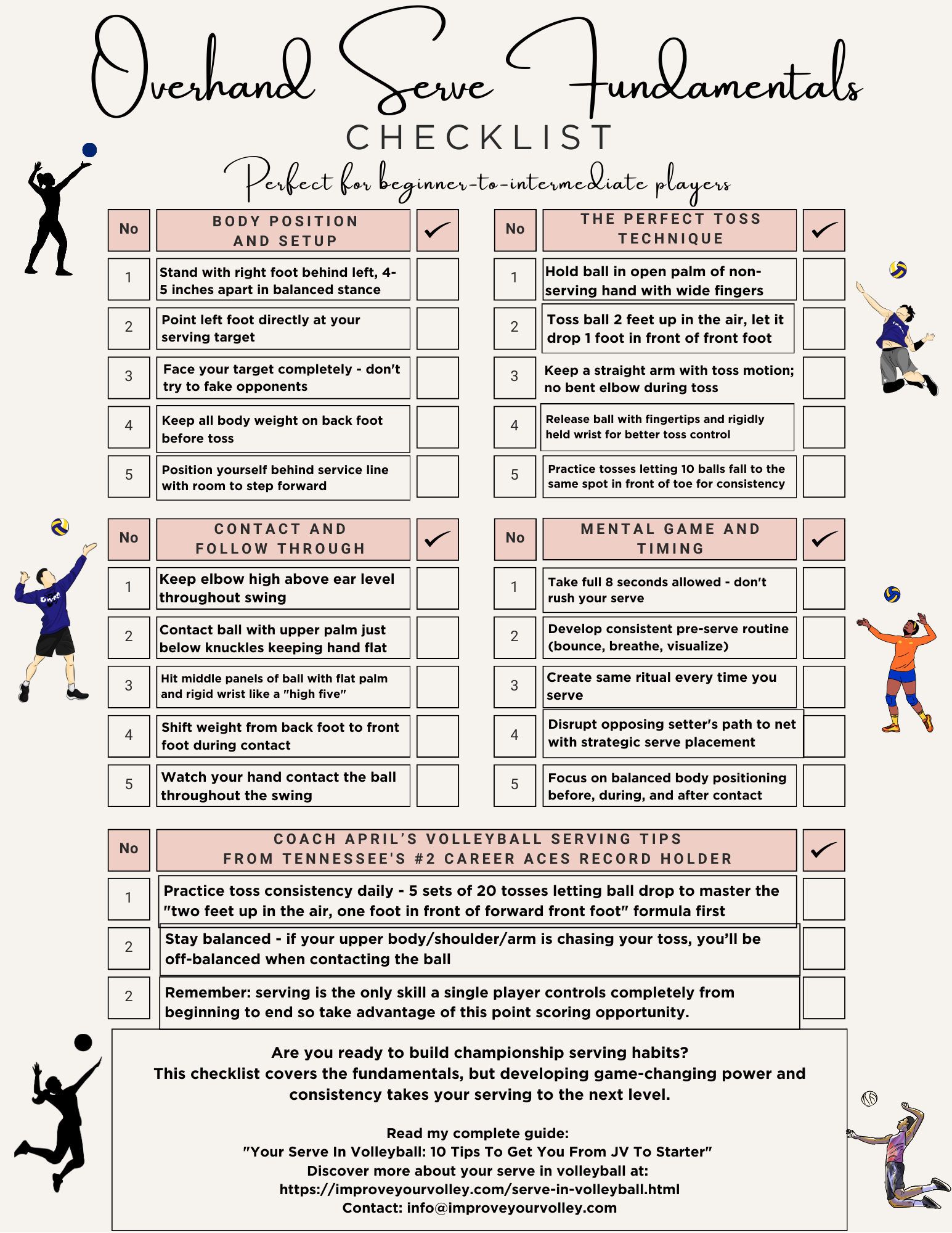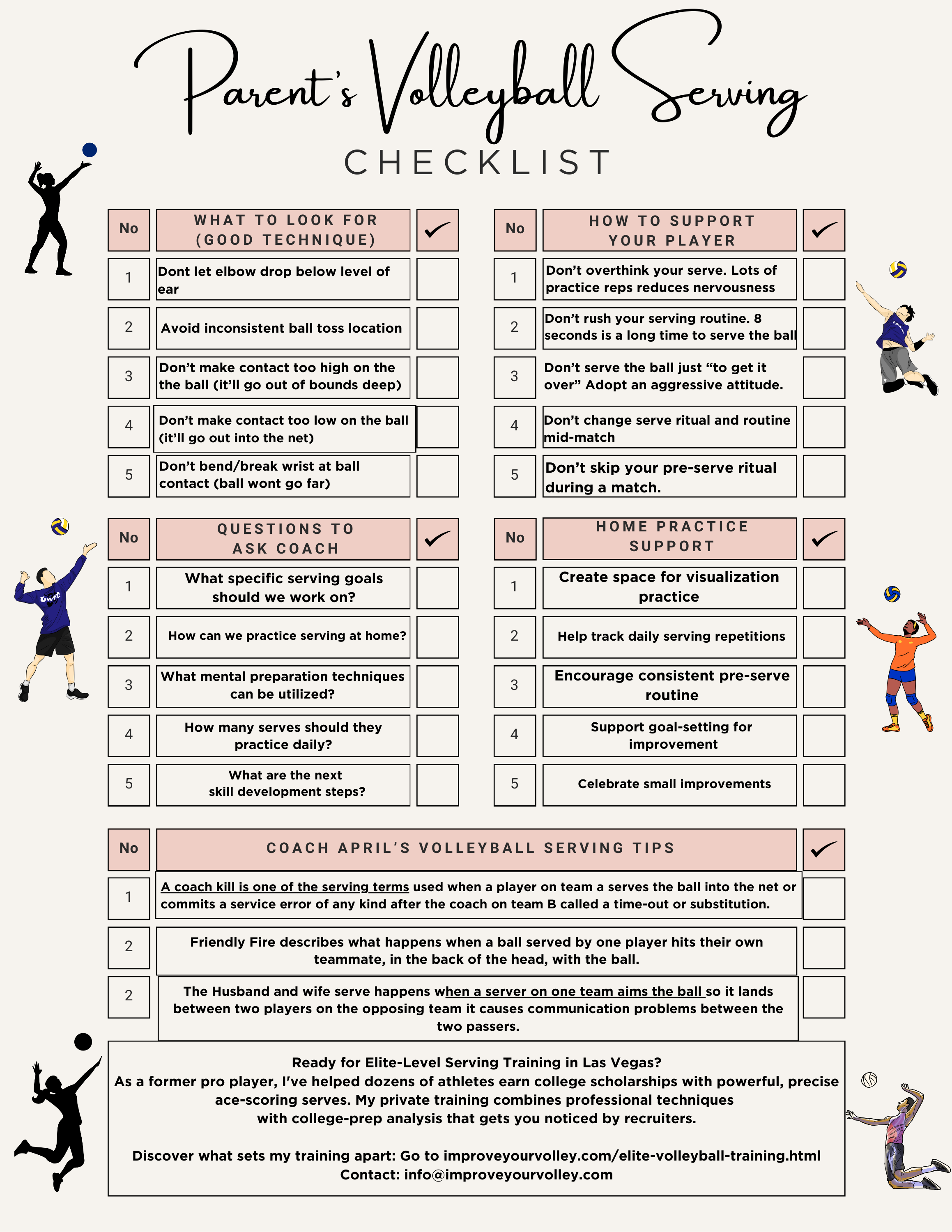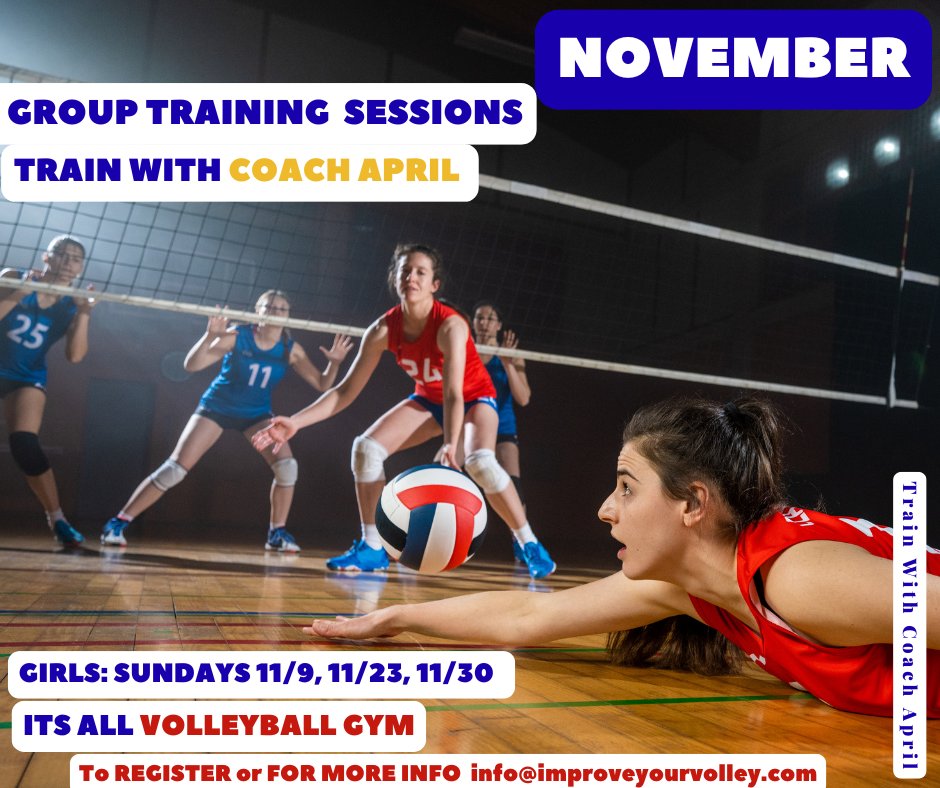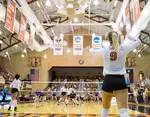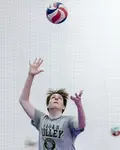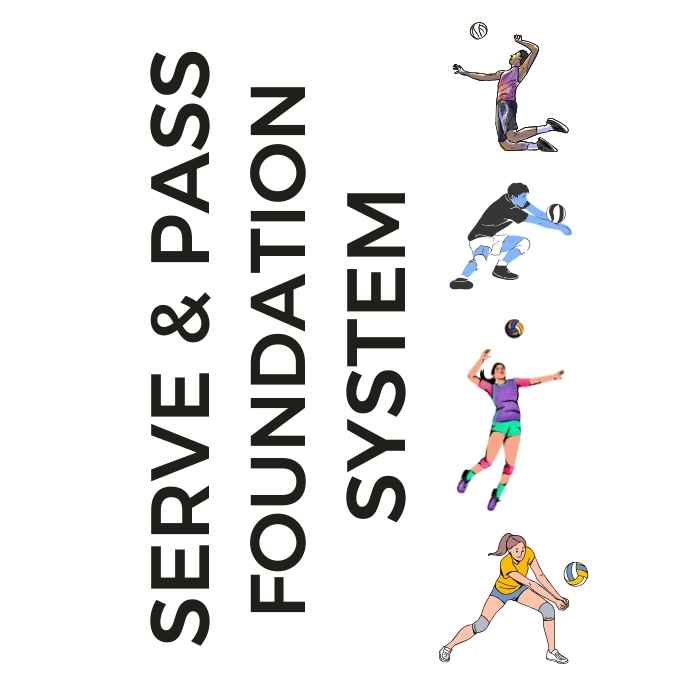
Serve + Pass Foundation System: The Complete Skills Arsenal The two-skill mastery system that transforms inconsistent players into the athletes coaches build their lineups around. Stop Struggling With The Two Most Important Skills In Volleyball!
- Improve Your Volleyball with Coach April
- Learn How To Coach Girls Volleyball
- Volleyball Serve Types
Three Volleyball Serve Types Players Use To Score More Aces Each Game
Learn 3 volleyball serve types that win games. Could adding 3-5 aces per set make you a starter? Learn standing float, topspin & jump float 'How to" techniques
Think about the last volleyball match you watched.
- Which players got the most playing time?
- Weren't they the ones who could consistently score points from the service line?
In volleyball, your serve is the only skill where you have complete control from start to finish - no teammates to rely on, no opposing blockers to worry about.
That's why mastering different serve types isn't just helpful; it's essential for any player who wants to make a real impact on their team.
The 3 Volleyball Serve Types You'll Master
 While it may seem basic compared to jump serves, don't underestimate its effectiveness.
When executed properly, this serve can be just as deadly as any power serve, and it's the one you'll rely on when consistency matters most.
While it may seem basic compared to jump serves, don't underestimate its effectiveness.
When executed properly, this serve can be just as deadly as any power serve, and it's the one you'll rely on when consistency matters most.The 3 Volleyball Serve Types You'll Master:
1. Standing Float Serve - Consistent and deceptive
2. Topspin Serve - Powerful with a sharp drop
3. Jump Float Serve - Combines power with unpredictability
I want to start with the foundation of all great serving - the standing float serve.
While it may seem basic compared to jump serves, don't underestimate its effectiveness.
When executed properly, this serve can be just as deadly as any power serve, and it's the one you'll rely on when consistency matters most.
Every coach knows that a player with only one predictable serve becomes easy to defend against.
But when you can switch between a standing float serve, a topspin serve, and a jump float serve, you force opponents to constantly adjust their passing formation and strategy.
- Isn't it true that the most valuable players on any team are those who can score points without needing a perfect set or an open hitting lane?
That's exactly what these three serve types allow you to do.
In my 15+ years of coaching volleyball in Las Vegas, I've seen countless players transform from bench warmers to starters simply by developing a reliable serving arsenal.
The difference between watching from the sidelines and being on the court often comes down to this: can you consistently put pressure on the opposing team with your serve?
Let me show you exactly how to master these three game-changing serves that my players use to dominate matches.
Lets Find Out How To Do The Standing Float Serve Correctly
Your Body Positioning For Certain Volleyball Serve Types: What Should It Be?
- Stand behind the service line with...
- Feet shoulder-width apart in the shape of the letter 'L" with your front foot pointed where you plan to serve and your back foot perpendicular to the front foot.
- your serving arm extended above your head with the palm of your hand facing the wall on the right side of your body
As a right handed server,
- line your body up to face your serving target
Your body will be parallel to the service line.
Whether you're serving to a court zone or directly to an opposing player...face your target.
Let the player know...you're coming right at them with your serve.
Know Where You're Going To Serve
Volleyball Serve Types: Standing Float Serve
Toni with the Float Serve During
Happy Hour Class Training
An important key for a server to remember is to make a decision early and decide where you are going to serve before you serve, then turn and point your toe and your tossing arm, straight at your serving target.
Sometimes your coach will make the decision for you and tell you where to serve by "calling the serve" with their finger by holding up a number that represents a zone on the opposing team's court to serve to.
If they don't "call the serve" then you need to formulate a plan in your head based on either
-where to serve to on the court or -who to serve to
so that you raise the possibility of scoring an ace which is a direct point by yourself for your team.
How do you do this? Look for
- who just made the last error on the court
- which passer looks nervous or looks angry or insecure
- which player in serve receive is not talking to other passers
- look for large seams or empty areas on the court
Strategic serving also can mean for you to look to see
- if the opposing team is made up of short players consider serving a deep serve in their court to force them to move backwards and to stay deeper in the court
- if the opposing team is made up of taller players (who usually) move slower than shorter players consider serving a short serve that forces tall passers to have to move forward to pass...which means their spike approach runway is made shorter so they don't have as much time to back up, shuffle outside and take their usual 3 or 4 step spike approach
Players are given a specific amount of time to serve a pre-determined number of balls to the target area formed by the chairs. hitting the middle of the chairs is rewarded more than just hitting the chairs in this case but coaches can come up with their own rules in in order to make this a tougher or easier drill.
Your Serving Arm Ready Position
Katelyn with the
Tough Jump Float Serve
Right Handed Serving Arm
- Raise your serving arm so its in a 90 degree angle with a bent elbow and open palmed hand, above the level of your right ear.
Many servers have problems serving over the net because they drop their elbow during their serving swing in an attempt to shot put the ball over the net
Keep your elbow above the level of your ear!
The Palm of Your Serving Arm Should
Face The Opposite Wall
- Keep a flat palm with fingers spread wide, as if you are about to give a teammate a high five
- Your flat hand should be as flat as a ping pong paddle.
Now that you've mastered the fundamentals of the standing float serve, let me ask you this:
What if you could add even more power and deception to your serving game? That's exactly what the topspin serve delivers.
Now that you understand the importance of varied serving, let's talk about the topspin serve - a weapon that can transform your scoring ability.
Three Common Mistakes To Avoid For The Standing Float Serve
- "Dropping the elbow (reduces power and accuracy)"
- "Inconsistent toss (leads to erratic serves)"
- "Not following through (limits control)"
Volleyball Serve Types: Score Aces with the Topspin Serve
If you've ever watched a volleyball match where one server consistently scored aces with a diving, fast-paced serve, you've witnessed the power of the topspin serve.
Wouldn't having that weapon in your arsenal change how opponents view you?
The topspin serve can turn you into your tough high-paced power serve.
It's all about making that ball dive down once it crosses the net.
Steps To A Successful Topspin Serve
- Start behind the service line. Grip the ball firmly.
- Feet shoulder-width apart, non-dominant foot forward.
- Toss the ball high about 8 to 10 feet in the air and slightly in front of you
- Take a three or four step approach to the ball like you'd do for your spike approach at the same time
- coordinate your upper body shoulders, arms and hands to do the same thing you'd do when you spike a ball
- Hit the highest point of the ball's arc with a strong hand. And don't forget the magic wrist snap to create that topspin.
Why Players Love The Topspin Serve
Opponents have a hard time keeping it under control because of its fast paced speed and sudden drop.
Volleyball Serve Types:
Watch Out For When Doing The Topspin Serve
- Timing your arm swing is crucial. Your toss and swing need to sync perfectly.
- Focus on the wrist motion. A quick snap will give you that needed spin.
Coach April’s Take On The Topspin Serve
The topspin serve can be a ticket to earning extra points.
Experiment with speed of the ball and angle location.
The more unpredictable you make it, the tougher it'll be for the opposite team to respond.
Remember, even the most daunting serve becomes second nature with practice and patience.
Keep practicing these serves and you'll find yourself in control, scoring points like never before.
In the next part of my guide, I dig into the jump float serve technique so you can really surprise your competition.
Remember, I'm here to help you get where you want to be in your volleyball journey.
While the topspin serve brings power through spin, the jump float serve offers a different advantage - unpredictability combined with pace.
Think about this: What if you could combine the unpredictability of a float serve with the power of a jump?
Wouldn't that make you nearly impossible to pass against? That's the beauty of the jump float serve.
Three Common Mistakes To Avoid For The Standing Float Serve
1. Tossing the Ball Too Low or Behind You
The topspin serve requires a high toss (8-10 feet) slightly in front of your hitting shoulder.
When players toss too low, they can't generate the necessary wrist snap for topspin.
Tossing behind forces an awkward reach that kills power and accuracy.
2. Hitting the Ball Too High On Its Surface
For effective topspin, you must contact the ball at its center-back, rolling your wrist over the top.
Many players hit too low on the ball, creating backspin instead of topspin, causing the ball to float long instead of diving down into the court.
3. Poor Timing Between Your Approach
and Your Arm Swing
Your approach steps and arm swing must synchronize perfectly.
Common timing errors include jumping too early (ball drops below ideal contact point) or too late (hitting the ball on the way down).
This mistiming reduces both power and spin.
Volleyball Serve Types:
Surprise Them with the
Jump Float Serve
It's a dual threat – combining the unpredictability of the float with the power from a jump.
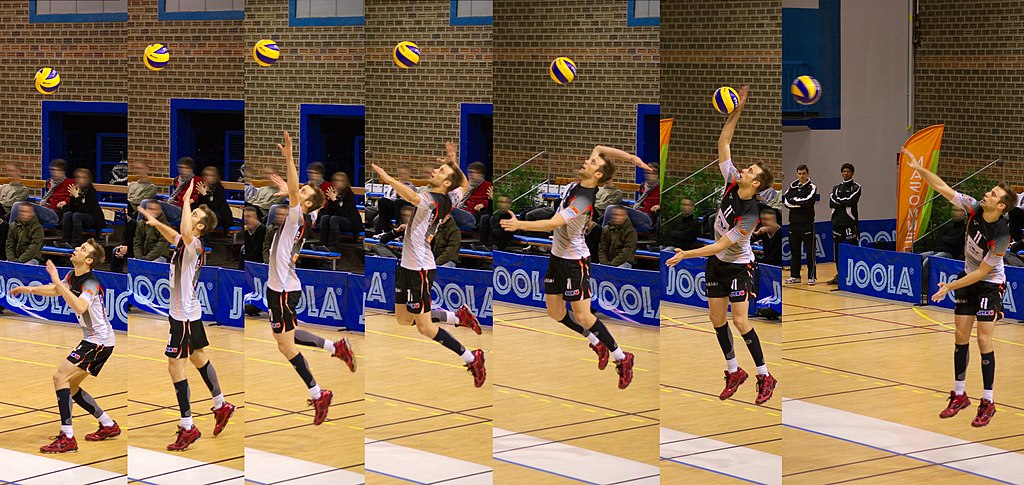 The jump gives your serve more power pace and angle, while the float characteristics make the ball's path tricky to predict.
Opponents find themselves guessing where the ball will land, making it a challenge to return effectively.
The jump gives your serve more power pace and angle, while the float characteristics make the ball's path tricky to predict.
Opponents find themselves guessing where the ball will land, making it a challenge to return effectively.Ask any coach: Would they rather have a server who's predictable or one who keeps opponents guessing?
The jump float serve ensures you're always the latter.
Learning the Jump Float Serve Technique:
Controlling Your Body In The Air
- Start 3 - 4 steps behind the service line. This gives you room for your serving approach steps whether you take three or four steps
- The serve approach is usually three steps: left-right-left (or right-left-right for lefties).
- As you take your first step forward, while your momentum is moving you forward then toss the ball up and slightly in front of you so that when you take your next steps ..you stay behind the ball.
- So to be clear the cadence would be for a right hander left step - toss the ball - right step - left step or for lefties then you'd take a right step-toss-left step-right step
- During your lift-off in the air, jump using a heel-to-toe motion with your feet to help you get elevated into the air quickly...just like an airplane you gather speed with each step as you move down your runway....before you actually lift off...into the air
- Just like the standing float serve your tossing arm with palm up cradles the ball and your serving arm is extended above your head so your arms in this position for the shape of the letter "L"
- At the height of your jump and keeping your elbow high above the level of your ear and palm facing the right wall, position your serving flat "high 5" hand for a firm, flat contact with the ball, just like with a standard float serve.
- Just like the standing float serve your tossing arm with palm up cradles the ball and your serving arm is extended above your head so your arms in this position for the shape of the letter "L"
- At the height of your jump and keeping your elbow high above the level of your ear and palm facing the right wall, position your serving flat "high 5" hand for a firm, flat contact with the ball, just like with a standard float serve.
Volleyball Serve Types:
Why The Jump Float Serve Works Wonders
Opponents find themselves guessing where the ball will land, making it a challenge to return effectively.
Three Common Jump Float Serve
Pitfalls to Avoid
My private clients are given a specific amount of time to serve a pre-determined number of balls to the target area formed by the chairs.
Hitting the middle of the chairs is rewarded more than just hitting the chairs in this case but coaches can come up with their own rules in order to make this a tougher or easier drill.
Regardless of the volleyball serve types you choose to use here are three tips you should pay attention to ...
Slow To Fast Serve Approach Steps
- The timing of your steps for your serve approach should go from slow-to-fast with an aggressive "step close" (the last two steps of your approach before lift-off) while staying behind the ball when you swing
Contact The Ball At The Highest
Point Of Your Jump
- Make contact with the ball - either on the way up or at the highest height of your vertical jump but not on the way down from your jump
Watch Your Hand When Contacting The Ball
- Watch your hand when you're contacting the ball. Hitting too low or too high can throw off your ability to control the ball and where you want it to land as well as it may affect the amount of float and spin movement on the ball
Three Common Mistakes To Avoid For The Jump Float Serve
Adding Wrist Snap Instead of
Keeping a Stiff Wrist
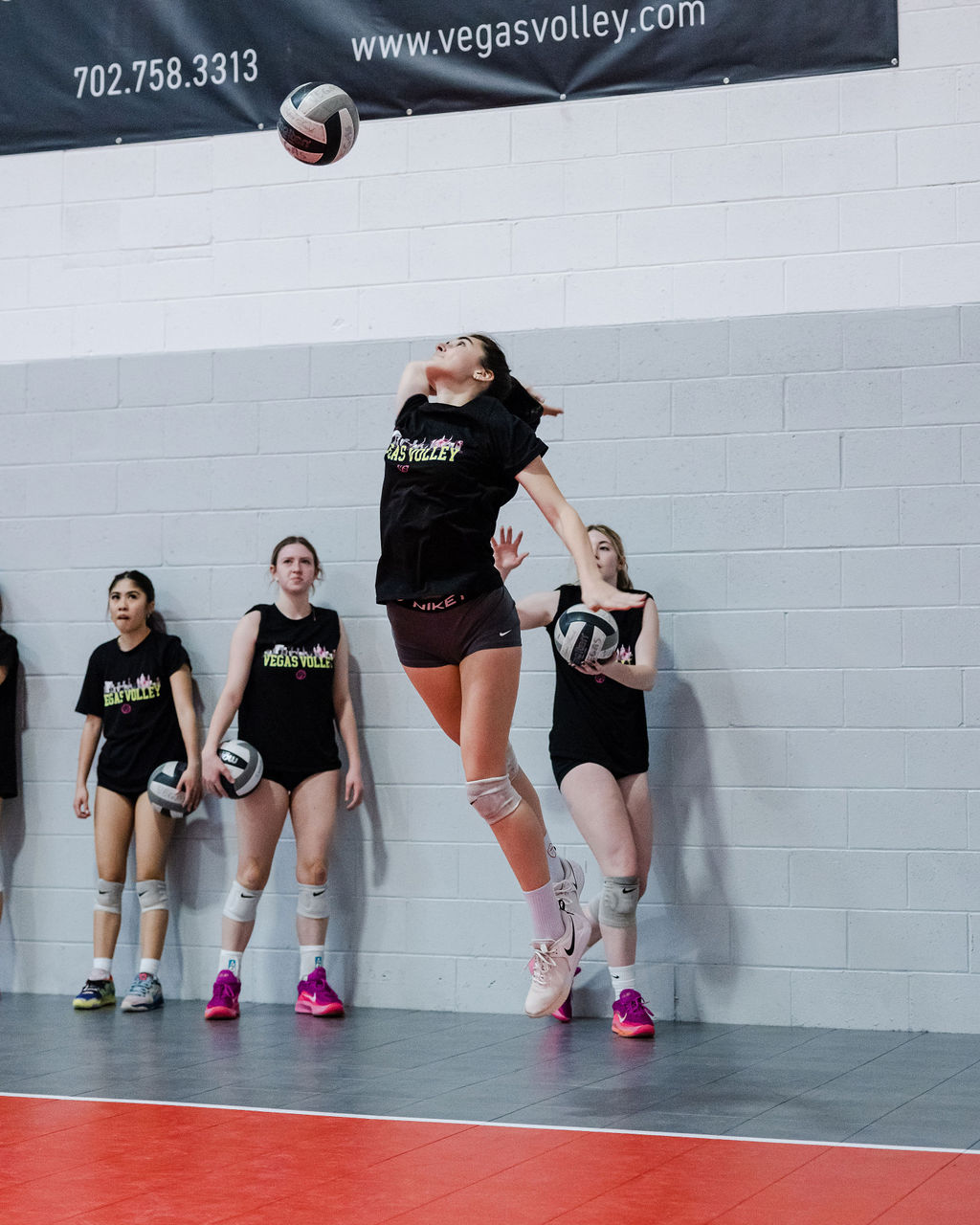
Are you willing to put in the practice time to master these three different volleyball serve types, knowing it could be the difference between starting and sitting on the bench?
Inconsistent Toss Height and Location
Unlike the high toss for topspin, the jump float needs a consistent, controlled toss just high enough for your approach timing.
Tossing too high forces you to wait, losing momentum. Tossing too far forward pulls you past the service line.
Contacting the Ball On The Way
Down from Your Jump
For maximum power and control, contact the ball at or just before the peak of your jump.
Many servers hit on the way down, reducing velocity and causing the ball to drop short.
This happens when players rush their approach or mistime their jump.
A Tip From (Me!) Coach April
Guess What? I Have Another Serving Tip For You
To produce a faster more powerful jump float serve make sure that you 'attack the floor' on those last two approach steps that you take before 'lift-off'.
I remind my players, that a strong lower-body push off the floor will help you lift up off the ground higher and will help you make an aggressive 'flat-hand stiff wrist" ball contact when you're mid-air.
Every extra inch you gain in your jump translates to the possibility of creating more power and pace that pushes the ball over the net faster and with more float and dip movement making it a difficult serve to pass.
Three More Tips To Consider...
- I always emphasize starting with your hips open to the right, especially when serving down the line.
- Keep your eye on the ball, just like Addi, who practices 100 overhand serves. It’s all about those reps!
Making These Different Volleyball Serve Types Players Use As Your Own
Here's a question every serious player needs to answer:
Are you willing to put in the practice time to master these three different volleyball serve types, knowing it could be the difference between starting and sitting on the bench?
Here's where the rubber meets the road.
It's not just about knowing about these volleyball serve types players use in a match but actually getting good at performing them so they feel like second nature out on the court.
Volleyball Serve Types:
Practice Makes Perfect
- Dedicate time every practice to each serve type. Start with 20 reps of each then gradually increase.
- Focus on one type per session to really internalize the method.
Avoid Overthinking
While practice is essential, don't get too caught up in perfection. Allow yourself to make mistakes – they’re just lessons that help you get better.
Volleyball Serve Types:
Simulate Game Scenarios
Use practice to mirror game conditions: crowds, pressure, everything.
This’ll boost your confidence when it's time to serve for real points.
Stay Positive
Remember, even the pros miss serves sometimes. It's all part of the game.
Keep a positive mindset and always aim to improve your skills.
Every game you don't make your mark is a missed opportunity. Let's make sure that next game counts more than any before.
Next Steps to Elevate Your Play
Starting With These Volleyball Serve Types Players Need To Learn
Each one of these volleyball serve types that players use...has its strengths, so learn them and use them strategically throughout your matches.
In my final section, I’ll tie everything together and give you the tools to dominate every serve you take.
Stay tuned! You're on your way to becoming the star server your team needs.
Wrapping It All Up:
Your Roadmap To Successfully Scoring With These Volleyball Serve Types
Mastering these volleyball serve types will give you options as a player and will make you a versatile and necessary presence on your team which makes you valuable to have on the court.
Here’s how to put it all together:
- Assess the Game: Decide which serve will best disrupt your opponents. Are they tall and slow moving because if so consider using your jump serves either topspin or jump float which forces passers to move faster. Many taller players move slow so the advantage may be on your side so use this to your advantage. Are the passers on your team short and quick? Then consider serving your standing or jump float serve deep in their court so they have to work harder to get the ball closer to the net in order to run an offensive play
- Rotate Your Serves: Keep your opponents guessing. By mixing up your serves, you maintain the element of surprise and prevent them from getting into a rhythm.
- Get Feedback: After matches, ask teammates and your coach about your serving performance. They often notice things you might miss.
- Review and Reflect: After practice or a game, jot down what worked, what didn’t, and why. This reflection helps solidify your learning and growth and helps you make a plan for what you need to work on in practice in the follow up weeks
Volleyball Serve Types:
Why Do Your Serves Matter?
Consider this...
In a 25-point game, if you serve 8 times and score just 3 aces, you've contributed 12% of your team's points single-handedly.
Isn't that worth investing your time in improving?
Your volleyball serve is more than just a way to start the rally; you should consider it as a point scoring strategic weapon that you are 100% in control of from start to finish.
By refining these volleyball serve types that varsity players need to know, you can directly score points and reduce the chance of opposing teams launching powerful attacks.
Practicing the art of these serves (for me serving is so important that I like to call it an 'art') builds your confidence.
Practicing the art of these serves (for me serving is so important that I like to call it an 'art') builds your confidence.
How many more matches will you watch from the sidelines, knowing that better serving skills could have earned you that starting position?
If personalized coaching could change that in just 5 sessions, wouldn't it be worth exploring?
My Final Thoughts for You:
Remember, every great volleyball player was once where you are – honing technique, refining skills, and aiming for consistency.
With dedication and the right mindset, you'll reach your serving goals.
Thank you for sticking with me through this guide. I believe in your potential and can't wait to see what you achieve next. If you have any questions or need further advice, don’t hesitate to reach out.
We're all in this game together!
If your athlete struggles with consistent serve receive, gets subbed out, or is overlooked for playing time—this is the fix you’ve been looking for.

Struggling with passing consistency?
I help talented passers tired of getting pulled from games because of inconsistent serve receive skills BUILD passing confidence without expensive private lessons using the same 3-step system that's helped dozens of my athletes get recruited.
Download my eBook for $17.99 and start building the passing confidence that keeps you on the court—and gets you seen by college coaches.
From Lady Vol to Legend: Coach April Produces Powerful Passionate Players...is that you?
What Are You Looking For?
Click to Download Your Pre Serving Ritual Mastery Checklist pdf:
🎯Volleyball Pre Serving Ritual Guide -
Players! Learn How To Transform Your Serve from Weak to Weapon
Click to Download Your Parent's Volleyball Serving Checklist pdf
🎯Parent's Volleyball Serving Checklist Guide
Parents! Help Your Player Develop Championship Serves (Even If You've Never Played)

Hi there!
Thanks for stopping by. Hope you learned something today that will help you reach your volleyball goals.
Be sure to subscribe to my email newsletter so you can learn more each week!
Stay strong! Stay motivated!
-Coach April

SUSCRIBE to my email newsletter below!
 Click to learn more about the weekly volleyball classes and clinics or email info@imrpoveyourvolley.com for information
Click to learn more about the weekly volleyball classes and clinics or email info@imrpoveyourvolley.com for informationCongratulations to my seven Boys-18s Vegas Volley club players who played in two state championship finals yesterday, the 3A and 5A State champinship finals at Sunrise Mountain High School.
TOURNAMENT CHAMPIONS!
A-1 Vegas Volley VBC
In It To Win It Tournament
May 2 - 4, 2025 Tournament
Gold Medalists
18s Premier Division
Vegas Volleyball's Unsung Heroes: Celebrating Moms with Peace Love Volleyball Shirts
Ready to energize your volleyball mom journey?
Subscribe to my 'Producing Powerful Passionate Peaceful Players' email list above on ImproveYourVolley.com.
You'll receive energy-boosting tips, exclusive insights from me, Coach April Chapple on maintaining momentum in volleyball.
Let's power up the Vegas volleyball scene together!
Recent Articles
-
5 Essential Serving Tips from Tennessee's #2 Career Aces Record Holder
Dec 09, 25 11:39 PM
I've identified the 5 essential serving tips that separate confident servers from struggling ones and you'll serve with the confidence that creates aces -
The Volleyball Toss How Consistent Is Your Ball Toss Before You Serve?
Dec 07, 25 12:29 AM
The volleyball toss for the overhand serve needs to consistently be two feet up in the air and one foot in front of front foot which puts the ball in front of your serving arm. -
Shop Small: Real Volleyball Training With + Results From A Real Coach
Dec 03, 25 10:30 AM
Support a woman-owned business. Get training from a former elite pro with 13+ years coaching experience. Ditch the big box store--invest in proven results.



